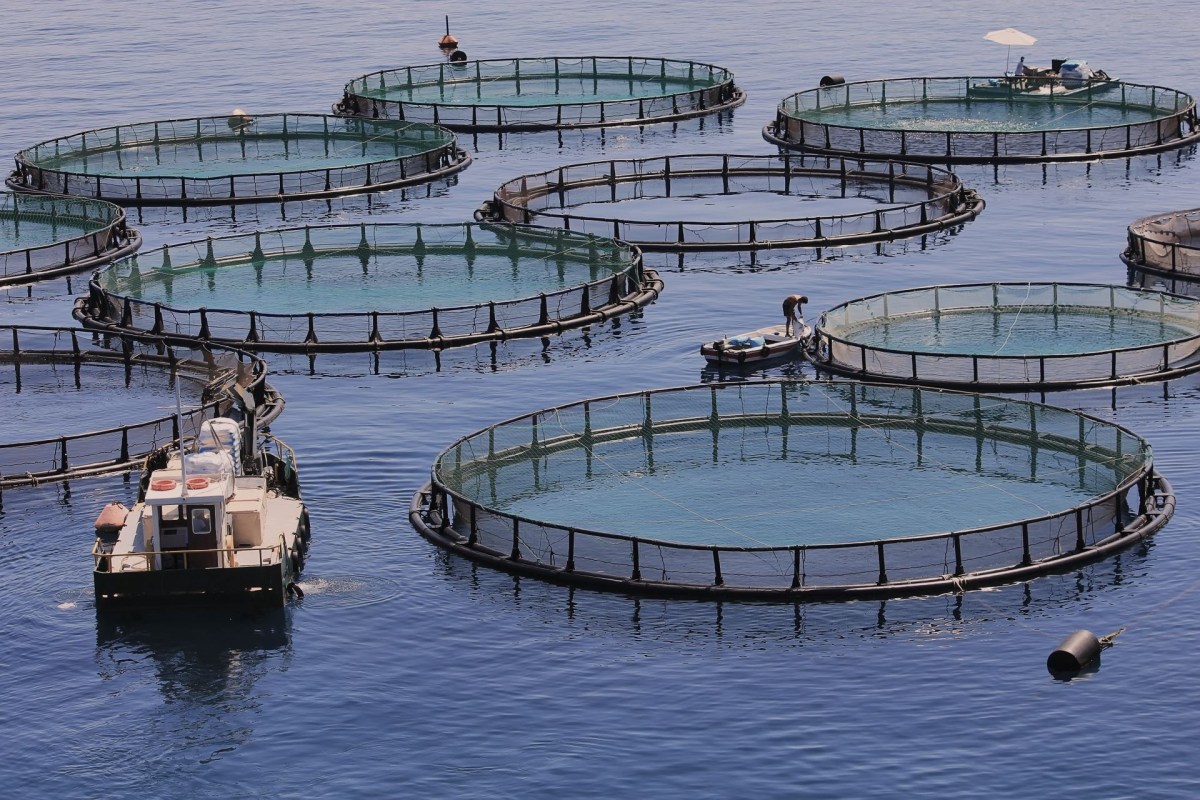The Port of San Diego is diving head first into the blue economy with its Aquaculture and Blue Technology Program.
Aquaculture is a growing industry in the blue economy that can provide a sustainable source of food, packaging, beauty products, biofuel, and many other things. The global aquaculture market is valued at around $290 billion and is projected to reach $421 billion by 2030, as reported by Vantage Market Research.
The Port recognized the growth opportunities of the blue economy sector and its strategic position within one of the world's leading blue technology clusters and decided to launch the AQ&BT in 2015.
So what are aquaculture and the blue economy?
The World Bank describes the blue economy as the "sustainable use of ocean resources for economic growth, improved livelihoods, and jobs," while preserving the health of our ocean ecosystems. Aquaculture is the farming of aquatic organisms — in the Port's case, specifically seaweed and shellfish.
Rafael Castellanos, the Port of San Diego Board of Port Commissioners chair, talked to The Cool Down about how San Diego Bay is becoming known as the Blue Tech Bay.
"The future of ocean-based economic development is very bright and exciting," said Castellanos, who has been on the board since 2013.
According to Castellanos, the shellfish aquaculture industry in the U.S. generates $300 million annually, and the global commercial seaweed market was valued at a whopping $16.6 billion in 2020.
The Port created its Blue Economy Incubator (BEI) in 2016 to assist in the creation, early development, and initial scaling of sustainable aquaculture and Port-related blue technology ventures. It directly supports entrepreneurs by providing funding and other support services.
"Ideas to work sustainably within the marine environment can come from anywhere," said Castellanos. "The best ideas will transition into concepts, design plans, and then prototypes."
Those prototypes are then tested and validated in a lab setting before being deployed in the real world.
"It is a win-win situation," Castellanos told The Cool Down. "The Port is learning from the pilot projects, which are addressing existing environmental challenges and informing future opportunities, and companies can make a strong case for commercialization once their pilot is finished."
What's been successful, and what does the future hold?
One of the more successful companies to come through the BEI is Sunken Seaweed, a startup company led by two marine ecologists, who Castellanos said are committed to pioneering sustainable seaweed aquaculture in San Diego.
The company's quarter-acre ocean farm is 25 feet deep and consists of ropes, buoys, and anchors attached to existing pier pilings, with dozens of horizontal lines of seaweed growing under the surface.
The Port recently reinvested in Sunken Seaweed so it could scale its farm and eventually sell seaweed to chefs and food production and distribution companies — and that's just the beginning of the possibilities for seaweed.
"They are also exploring a range of products, including fertilizers, human food supplements, and livestock feed additives," Castellanos explained.
Aquaculture has a controversial history, particularly with finfish farming. Many people are understandably concerned about the impacts on marine ecosystems. Castellanos assured The Cool Down that the Port is an "environmental steward" of San Diego Bay.
As part of the BEI's thorough review process, the Port has experts who "conduct extensive due diligence to understand the potential environmental risks of each proposed pilot project," he said.
When the Port first decided to dip its toes into the aquaculture waters, Castellanos said there were some initial concerns among locals.
However, "since then, we have had time to familiarize local commercial fishermen with shellfish and seaweed aquaculture, the similarities that exist — in terms of infrastructure and labor/skill sets needed — and the potential for business opportunities in the future," he explained.
The Organization for Economic Cooperation and Development (OECD) projected the global ocean economy to be valued at $3 trillion by 2030.
The U.S. imports about 90% of the seafood we consume, with more than half coming from aquaculture. Growing the domestic aquaculture industry with programs like the Port's BEI can help shift the tides of the $14 billion seafood trade deficit.
"Ocean development is driven by curiosity, ingenuity, and tenacity, and many very smart people are working hard to solve some extremely difficult problems," Castellanos told The Cool Down. "We anticipate we will be rich in opportunities."
Castellanos has big dreams for the Port's future in the blue economy.
"Like Santa Clara Valley is known as Silicon Valley, we hope San Diego Bay will be known as the Blue Tech Bay," he said, presumably wearing some shades.
Join our free newsletter for cool news and actionable info that makes it easy to help yourself while helping the planet.









